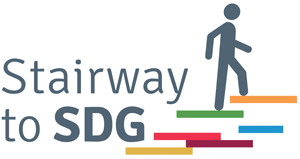Introduction

Team (By Henning Westerkamp on pixabay.com)
Our consumption has a big impact on our ecological footprint, but also on working conditions of the people who produce the goods we buy. In order to contribute to a more sustainable society and economy, students should be able to reflect on their own consumer behaviour, how their consumption patterns reflect their values and why people do or do not buy sustainable products. The objective of this activity is to make students understand how our values are related to our (consumer) behaviour and how a company’s communication reflects the company values. At the end students should also formulate advice on how a company in their own professional field could improve its communication to be more in line with the company values and attract a larger customer target group.
Learning Objectives
- The learner understands the concepts of sustained, inclusive and sustainable economic growth, full and productive employment, and decent work, including the advancement of gender parity and equality, and knows about alternative economic models and indicators.
- The learner is able to discuss economic models and future visions of economy and society critically and to communicate them in public spheres.
- The learner is able to understand how one’s own consumption affects working conditions of others in the global economy.
- The learner is able to develop and evaluate ideas for sustainability-driven innovation and entrepreneurship.
- The learner is able to facilitate improvements related to unfair wages, unequal pay for equal work and bad working conditions.
- The learner is able to develop criteria and make responsible consumption choices as a means to support fair working conditions and efforts to decouple production from the impact of natural hazards and environmental degradation.
- Normative competency
- Collaboration competency
- Critical thinking competency
Instructions
Step 1) Introduce the concept of sustainable consumer behaviour to your students (20 minutes)
The objective of SDG8 is to contribute to a society and economy which ‘meets the needs of all within the means of the planet. In other words, to ensure that no one falls short on life’s essentials (from food and housing to healthcare and political voice), while ensuring that collectively we do not overshoot our pressure on Earth’s life-supporting systems, on which we fundamentally depend – such as a stable climate, fertile soils, and a protective ozone layer’ (Raworth, 2017). Our consumption has a big impact on our ecological footprint, but also on working conditions of the people who produce the goods we buy. In order to introduce SDG8 to your students you can show this video: https://www.youtube.com/watch?v=atTtM7LcDuo&feature=emb_logo In order to introduce sustainable consumer behaviour to your students you can show this video: https://www.youtube.com/watch?v=aoEh1Dg2vJA
Step 2) Ask your students to reflect on their own consumer behaviour and values (40 minutes)
- (10 min.) Students should reflect individually and write down their answer on the questions: How often do you buy fairtrade and/or organic, locally produced products? Why? Why not? Are there important barriers that prevent you from buying fairtrade and/or organic, locally produced products? What encourages or would encourage you to buy these products?
- (15 min.) Step 2B is only for students with a good level of English: Ask your students to do the Moral DNA test which can be found on https://moraldna.org/ The goal of the test is to make students understand which are their main values. Afterwards, ask your students to reflect on the question: What are your most important values, based on the moral DNA test? Does your consumer behaviour reflect your values? Why or why not?
- (15 min.) As an alternative for 2B you can ask your students to do the following test https://survey.valuescentre.com/survey.html?id=s1TAEQUStmx-pUIle-ma6Q Or if you do not have enough computers, ask them to write down: My core values are…
You can let them choose from this values list (positivepsychology.com)
Values list: Acceptance Achievement Advancement & Promotion Adventure Affection Altruism Arts Awareness Beauty Challenge Change Community Compassion Competence Competition Completion Connectedness Cooperation Collaboration Country Creativity Decisiveness Democracy Design Discovery Diversity Environmental Awareness Economic Security Education Effectiveness Efficiency Elegance Entertainment Enlightenment Equality Ethics Excellence Excitement Experiment Expertise Exhilaration Fairness Fame Family Happiness Fast Pace Freedom Friendship Fun Grace Growth Harmony Health Helping Others Helping Society Honesty Humour Imagination Improvement Independence Influencing Others Inner Harmony Inspiration Integrity Intellect Involvement Knowledge Leadership Learning Loyalty Magnificence Making a Difference Mastery Meaningful Work Ministering Money Morality Mystery Nature Openness Originality Order Passion Peace Personal Development Personal Expression Planning Play Pleasure Power Privacy Purity Quality Radiance Recognition Relationships Religion Reputation Responsibility & Accountability Risk Safety & Security Self-Respect Sensibility Sensuality Serenity Service Sexuality Sophistication Spark Speculation Spirituality Stability Status Success Teaching Tenderness Thrill Unity Variety Wealth Winning Wisdom
Afterwards, ask your students to reflect on the question: Does your consumer behaviour reflect your values? Why or why not?
Step 3) Group reflection (15 minutes)
Make groups of 3-4 students.
Ask your students to share their answers to the questions of step 2 with their team members. Based on the answers of all team members, the students should make a list of reasons why people buy or do not buy sustainable/fairtrade products (see template ‘reasons sustainable consumer behaviour’).
Step 4) Sustainable consumer behaviour in your professional field (30 minutes)
Ask your students to look on the internet for a company in their professional field that produces and sells sustainable or fairtrade products or services. Ask your students to analyze:
- The company’s values: Does the company website mention the firm’s mission and ideals?
- How does the company communicate about its sustainable products/services? Is it engaging for the customer? Why/ why not? Are there improvements possible? How does the company overcome in its communication the barriers the students found in the previous steps?
- Does the company’s communication reflect the company mission/ideals/values?
- Based on the company mission/values, what type of customer do you think this company attracts?
- How could the company attract a larger target group?
Step 5) Plenary presentation (20 minutes)
Ask each team to present in 5 min. their main findings.
As an alternative or additional task, you can ask your students to write their findings down in a report or to present it in a more creative/visual way.
- CALL TO ACTION 1
Ask your students to contact the company they have analyzed to do a company visit and an interview with the manager to gain more insights on the company’s mission, target group and communication strategy.
- CALL TO ACTION 2
Ask your students to do a reflection exercise at home: Do the company values of the firm you analyzed correspond with your personal values? Why/ why not? Would you, in the future, like to work for or with this company? Why/Why not? If not, look for a company that aligns with your values (it can also be a social profit company or a non-profit organization). You can do a coaching or classroom conversation with your students on this topic afterwards. A suggestion for students in the near future: look for an internship or volunteering experience that aligns with your values.
Notes for Educators
Estimated Total Duration: 2 hours and 5 minutes + Call to Action
- This activity is suitable for a group of 15-20 students in groups of 3-4 people.
- SITRA developed a very interesting workbook on how to influence sustainable consumer behaviour. Sitra’s SHIFT methodology and workbook can be found here: https://www.sitra.fi/en/publications/shift-workbook/ If you want to explore the topic of sustainable consumer behaviour in a more profound way with your students, you can ask them to look for a business case in their professional field (or provide them with a business case) and to apply the exercises in the SHIFT workbook. The SHIFT exercise is only suitable for students with a good mastery of English and an advanced educational level.








